Histology Practical Lab
One Histology Practical lab to accommodate 112 students with 126 compound microscopes and 6 dissection microscopes with two 55” ceiling mounted LED TV
The Institution has an Integrated Museum with five departments. The Anatomy department section in the museum has a catalogued, well organised, regional distribution of wet specimens, dry bones, foetal and teratology specimens, comparative anatomy specimens, cross-sectional anatomy specimens, imaging related – radiographs, CT scans, MRI scans, embryology models to facilitate learning.
The following kind of models and specimens are available for facilitation of learning -
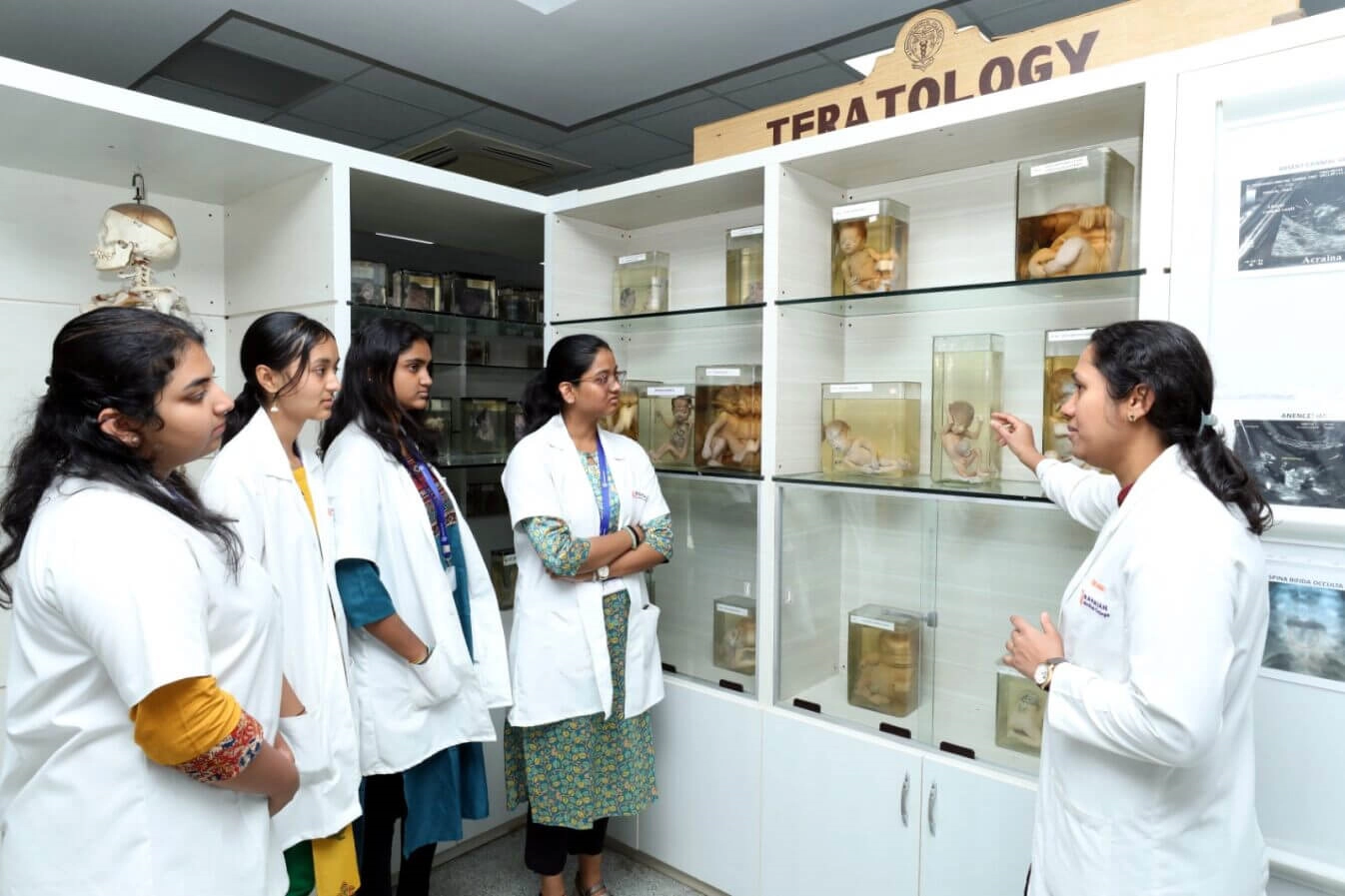
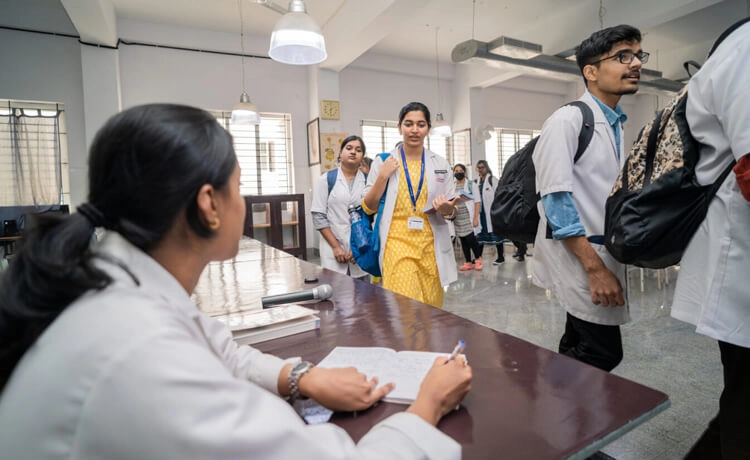
Three Demonstration rooms with the capacity of 75-100 students. All the demonstration room have an overhead projector with internet connection and wall hanging articulated skeleton in two of the demonstration rooms.

One Dissection Hall with 28 dissection tables and 8 desktop computers to facilitate computer assisted learning which allows students to create reports on their cadaveric studies more efficiently. 2 articulated skeleton is hanged for study purpose.
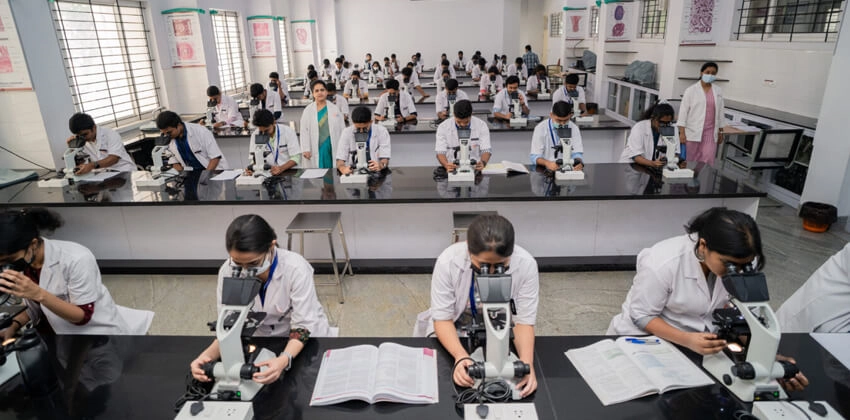
One Histology Practical lab to accommodate 112 students with 126 compound microscopes and 6 dissection microscopes with two 55” ceiling mounted LED TV
PG Research Lab with anthropometric instruments, weigh balance, embryology models, binocular microscope, distillery unit, equipments for learning histological techniques.
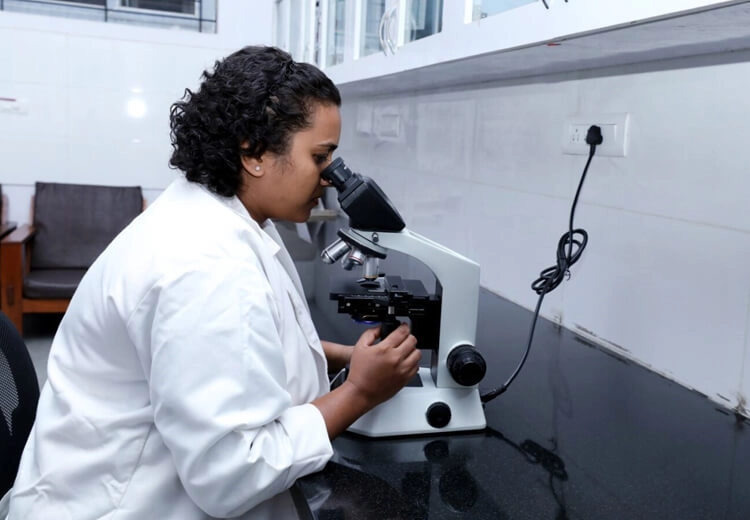
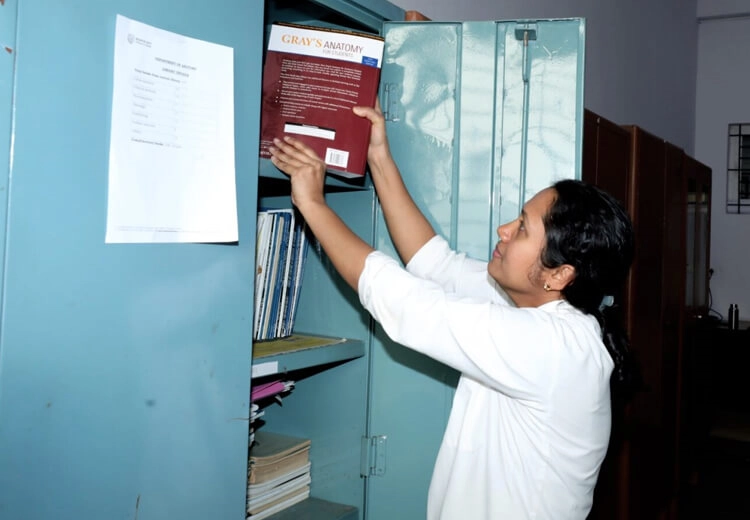
Department library with around 354 books for faculty reference.
Voluntary Body Donation Programme
Voluntary Body Donation is a programme wherein the general population can pledge to donate their bodies after their demise to serve the purpose of medical education and scientific studies. Primarily, the body donation programme helps the medical student to learn the relations of human anatomical structures and development of psychomotor skills by dissection.
These donations also help the surgeons to experiment with innovative surgical skills and procedures in the form of cadaver labs, workshops, thus giving them an opportunity to explore in a realistic manner. Another innovation evolved are the cadaver banks like brain, skin and vessel banks which are collections of these samples that later can be used for conducting molecular research and cadaver grafting.
Voluntary body donation program was started at MSRMC in 1998, when the first donor registered. There are more than 6800 registrations till date.
Abhinandana is a thanksgiving programme organized annually for voluntary body donors in which various health awareness guest lectures are organized for the benefit of the donors by the renowned clinicians of Ramaiah hospitals to mark the occasion.
Annual free medical health check-up at Ramaiah Medical Teaching Hospital is provided for registered donors.
Free ambulance service is provided (within 50 kms radius) to shift the body of the deceased donor to the mortuary (cold storage) after verification of the cause of death certificate.